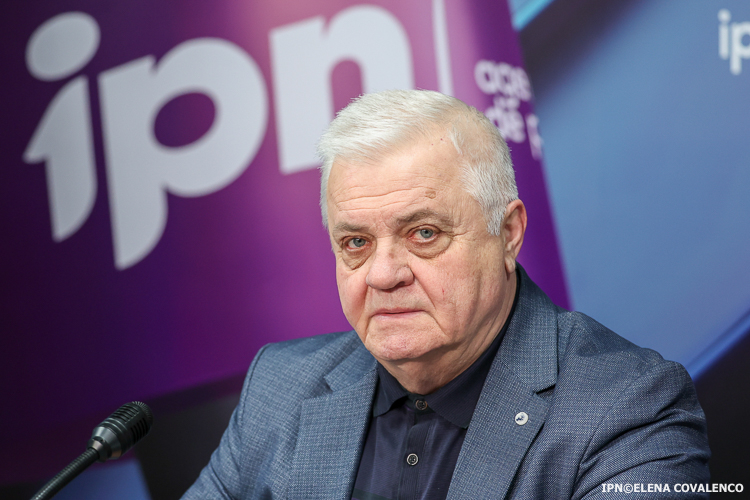
 |
|
| Anatol Țăranu | |
Although, frequently, the Declaration of Independence is approached from a legal-political perspective, as an act of detachment from the USSR, following deeper reading, it is outlined as a reaffirmation of the Romanian national identity and a reconnection with the historical truth of the majority population eastwards the Prut.
Historical context
The adoption of the Declaration of Independence took place in an international context marked by the collapse of the Soviet Union and the affirmation of national revival movements in the former Soviet republics. In the case of the Republic of Moldova, the emancipation process was deeply influenced by the National Liberation Movement, which brought back to the fore the Romanian language, the Latin alphabet and the Romanian identity of Bessarabia – a territory with a common past with Romania.
The preamble of the Declaration refers to "the millennial past of our people and its uninterrupted statehood in the historical and ethnic space of its national becoming." This formulation suggests that the Moldovans eastward the Prut were formed in a historical framework dominated by state continuity. The space of "national becoming" is not limited to the borders of Bessarabia, where the national statehood was interrupted by the annexation of the land by Tsarist Russia in 1812, but includes the entire Romanian territory, suggesting the belonging of the Moldovans from Bessarabia and Transnistria to a historical and ethnic matrix common for the entire Romanian space.
The declaration explicitly states that the official language is Romanian, and the belonging of the territory of the Republic of Moldova to the Romanian space is confirmed by condemning the Ribbentrop-Molotov Pact and its consequences, including the annexation of Bessarabia by the USSR in 1940, acts considered illegal and profoundly harmful to national sovereignty and identity. Therefore, the Republic of Moldova considers that it is derived from the historical continuity of Greater Romania and reaffirms an indissoluble bond with the Romanian nation.
Identity and cultural dimension of the Declaration of Independence
The proclamation of the Romanian language as an official language constitutes re-establishment of the cultural and linguistic truth, after decades of Russification and denationalization policy. During the Soviet period, the promotion of a distinct "Moldovan language" and an artificial identity served as an ideological tool for fragmenting Romanian unity.
The declaration explicitly recognizes the fact that the Republic of Moldova is a Romanian territory occupied as a result of the Ribbentrop-Molotov pact, thus reaffirming the Romanian identity of Bessarabia. Through the references to the "Romanian language as a state language" and to the "Romanian culture", the text of the Declaration delegitimizes the Soviet ideology and creates the legal and moral foundation for the acknowledgement of the Romanian national identity.
Thus, the Declaration becomes a reparatory act, which restores the natural connection of the population with the Romanian language, traditions and values, opening the way to the reaffirmation of these elements in all state institutions.
Political dimension: between independence and reunification
Although drafted in a diplomatic language, specific to the historical moment, the Declaration sends a strong political message: the national project is an open one. The Republic of Moldova is essentially defined as a Romanian state, with a majority Romanian population, separated from Romania by an act of force of 1940.
The document does not exclude the possibility of national reunification, but rather assumes it, treating independence as a provisional stage in a broad process. The Declaration can therefore be interpreted not only as an act of rupture with the USSR, but also as a pre-constitutional document of a temporarily divided Romanian state, in the process of reunification.
This vision is supported by the reaffirmation of the political and historical continuity between the Republic of Moldova and Romania. The majority population is recognized as an integral part of the Romanian people, and the territorial division is presented as a historical anomaly. Independence is thus seen as a necessary but transitory step on the road to reunification.
Current relevance and implications
In the current geopolitical context, the Declaration of Independence acquires new undertones. It is not only a founding act, but also a symbol of the struggle for self-determination, freedom and national dignity. In a world marked by instability, the integration of the Republic of Moldova into European and Euro-Atlantic organizations becomes essential, and the values of the Declaration – freedom, sovereignty and the right to decide one's destiny – are more relevant than ever.
After the launch of Russia's military aggression against Ukraine, the reaffirmation of national identity becomes a strategic necessity. In this sense, the Declaration is a cornerstone for the construction of a Moldovan state anchored in European values, but faithful to its Romanian roots.
Conclusions
The Declaration of Independence of the Republic of Moldova is a fundamental document, with profound historical, cultural and identity implications. It reconfirms the belonging to the Romanian space, condemns the Soviet occupation and reaffirms the historical link between the Republic of Moldova and Romania. At the same time, it offers a vision of a future built on truth, dignity and national unity.
This document should not be perceived only as a relic of the past, but also as a living guide, which inspires and guides the process of consolidating the common Romanian identity. The Declaration is also an essential pillar of the European project of the Republic of Moldova and an authentic expression of the will of a people to write its history in freedom.
IPN publishes in the Op-Ed rubric opinion pieces submitted by authors not affiliated with our editorial board. The opinions expressed in these articles do not necessarily coincide with the opinions of our editorial board.













